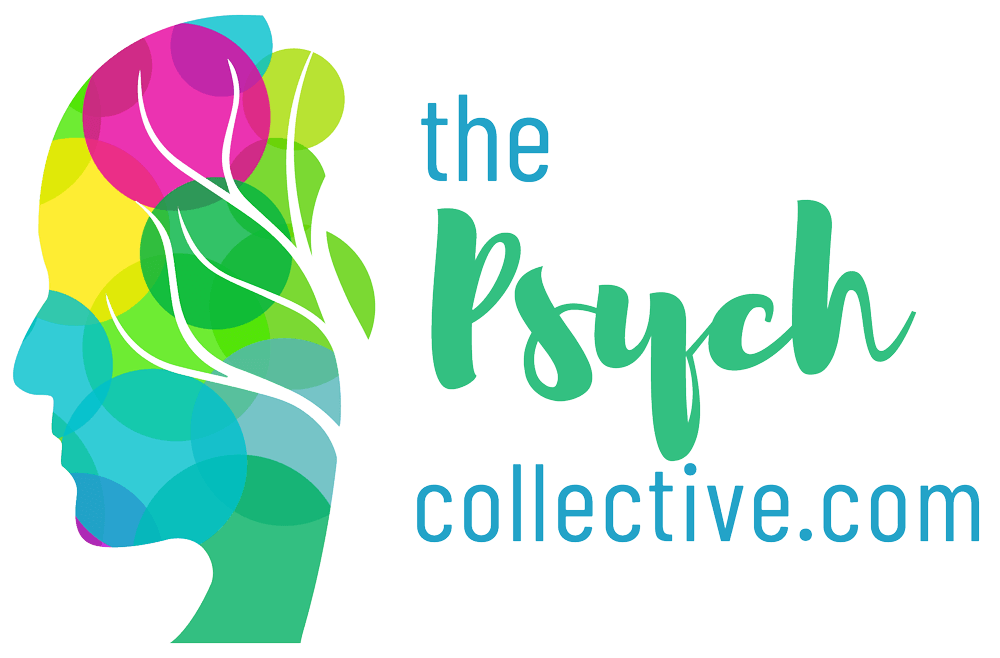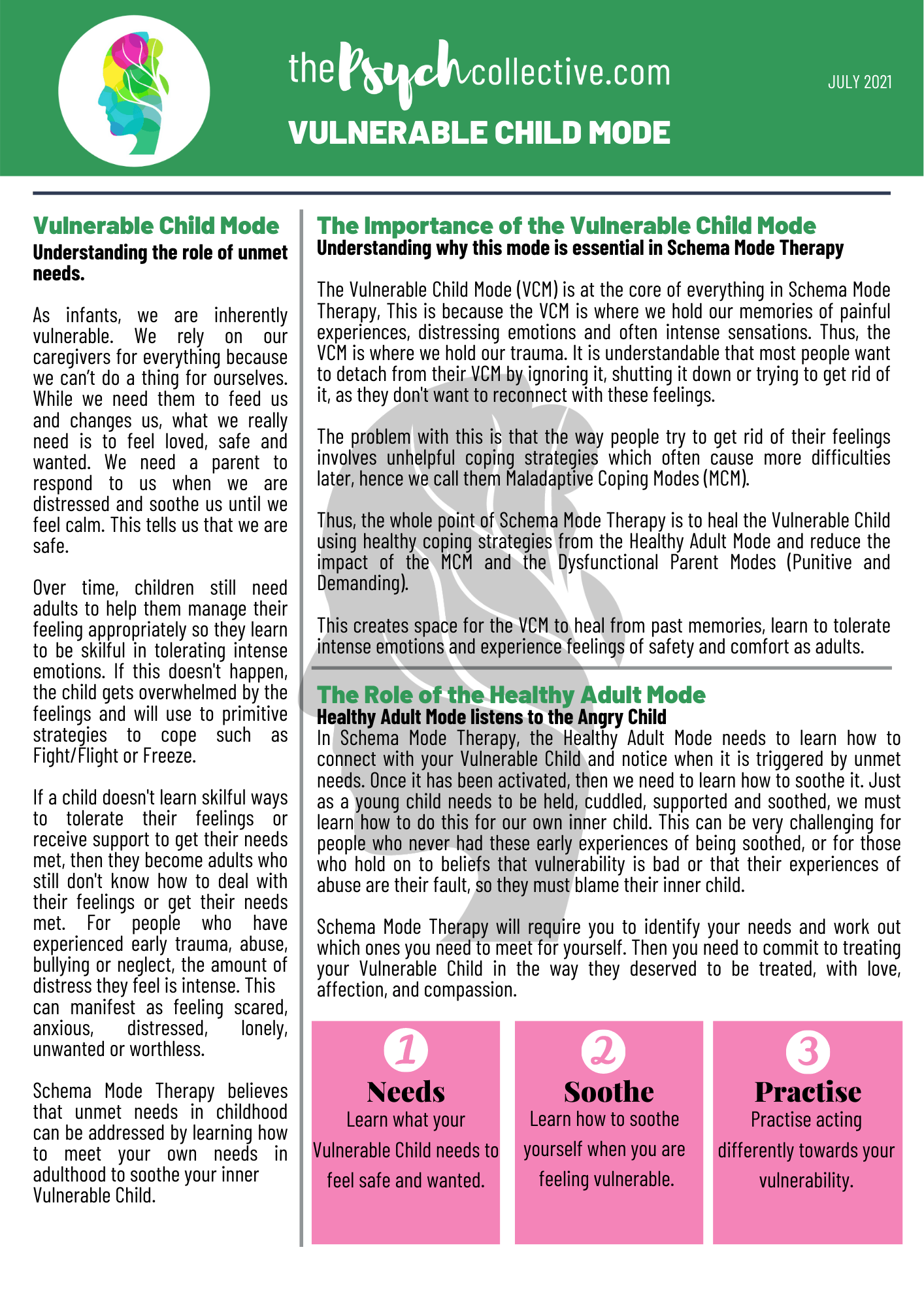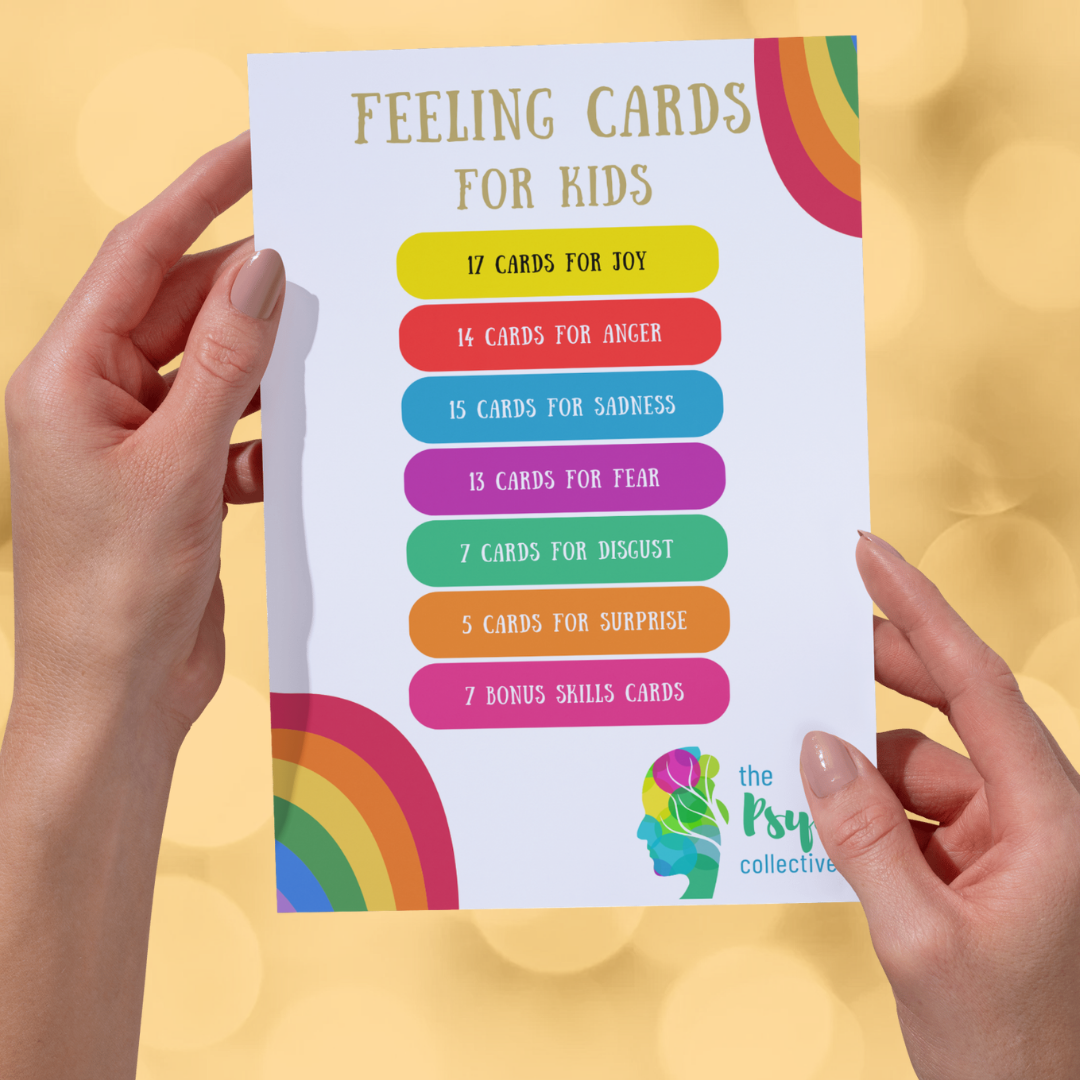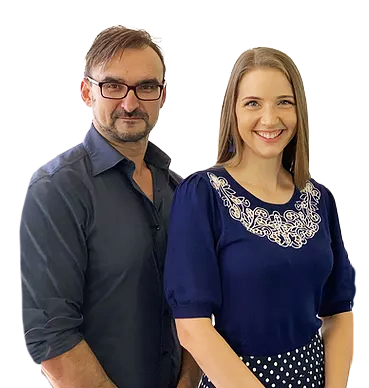Vulnerable Child Mode
The Vulnerable Child Mode (VCM) is at the core of everything in Schema Mode Therapy, This is because the VCM is where we hold our memories of painful experiences, distressing emotions and often intense sensations. Thus, the VCM is where we hold our trauma. It is understandable that most people want to detach from their VCM by ignoring it, shutting it down or trying to get rid of it, as they don't want to reconnect with these feelings.
The problem with this is that the way people try to get rid of their feelings involves unhelpful coping strategies which often cause more difficulties later, hence we call them Maladaptive Coping Modes (MCM).
Thus, the whole point of Schema Mode Therapy is to heal the Vulnerable Child using healthy coping strategies from the Healthy Adult Mode and reduce the impact of the MCM and the Dysfunctional Parent Modes (Punitive and Demanding).
This creates space for the VCM to heal from past memories, learn to tolerate intense emotions and experience feelings of safety and comfort as adults.
Read more on our Vulnerable Child Mode handout. Download it for free from our Resources page.
How to Soothe your Vulnerable Child
One of my favourite techniques for soothing the Vulnerable Child is with a Blanket Hug.
You can do this with any blanket, or you can purchase one of ours which has a Good Parent script printed on it.
Check out this video for a demonstration on how to give yourself a blanket hug.
Share
Categories
About Our Resources
We offer actionable resources and teach real skills to help people make meaningful change in managing mental health issues through different modes depending on people's learning preferences including infographics, text, worksheets, handouts and video.
